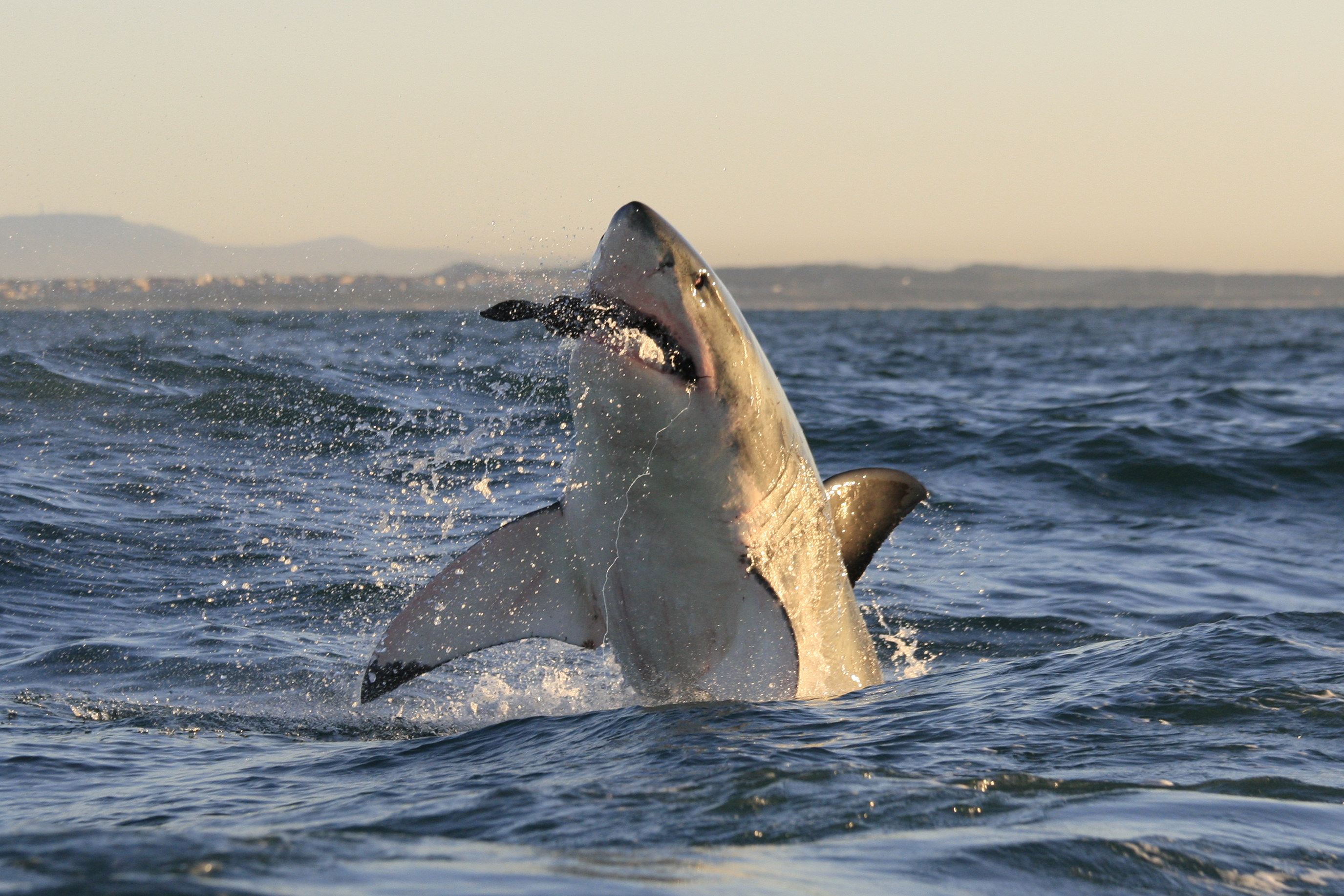Great white sharks off the U.S. West Coast are being driven northwards by warming seas, threatening local ecosystems as they move.
Climate change-driven temperature increases in the waters off California have caused juvenile white sharks to be found much further north than usual. Normally they are only found as far north as South California, but they have been found in increasing numbers in Monterey Bay in Central California.
“We documented the sudden occurrence of much smaller sharks than had ever been seen here before,” marine ecologist Salvador Jorgensen of California State University Monterey Bay, told AFP this week. “As ocean temperatures have been warming through a series of El Ninos, and heat waves, many species have been shifting their range further north, further towards what were historically cooler areas.”
Great white sharks, known to scientists as white sharks, are one of the largest species of shark in the world, growing up to 20 feet long and weighing up to 5,000 pounds.
They are warm-blooded, meaning that juvenile sharks are more sensitive to colder water, preferring to mature in milder temperatures off the coast. As warmer waters creep northwards due to climate change, so do the sharks.
“All animals have a thermal range within which they can survive but also a temperature at which they perform best (e.g. temperature at which the muscles operate optimally),” Yannis P. Papastamatiou, an associate professor at Florida International University’s Predator Ecology and Conservation lab, told Newsweek. “One of the consequences of a changing climate is that it gets warmer further north, so areas that were not habitable to the animal now are. White sharks are endothermic (warm-bodied) but still have optimal temperatures and endothermy is less well-developed in juvenile animals. So far, the northerly expansion has been seen in juvenile white sharks.”
These northward-moving juvenile sharks will therefore be swimming off the coast of beaches that are usually shark-free, which may lead to greater human-shark interaction. However, the degree to which the sharks will impact on people is unclear.
“The impacts on humans will very much depend on where they are moving and how quickly,” Culum Brown, a professor of fish biology at Macquarie University, told Newsweek. “Will the new distribution overlap with major cities? Human-shark interactions require both sides of the equation: More people in the water and more sharks in the water = more bites.”
Additionally, the increased shark numbers are likely to be mostly juveniles, which are much less likely to attack humans.
“Shark bites on humans, while very rare, will be a function of the number of sharks, so if you increase the adult white shark population then you may predict a change in the number of bites on humans,” Papastamatiou said. “However, as far as I can tell, the increase in white shark numbers in northern California is for juvenile white sharks.
“Juveniles are very rarely implicated in bites on humans as their diet consists of fish, although they may attack small mammals like otters. So, I wouldnt necessarily worry yet as the juveniles now inhabiting the northerly locations may be too small to really risk biting humans. You should still be very cautious around them though (juvenile white sharks are still at least 5-6ft long!).”
The juveniles are affecting local ecosystems, however, as their increased numbers have led to more attacks on sea otters.
“An over-abundance of juvenile white shark around their more northern aggregations may cause some of the juveniles to opportunistically hunt in novel habitat and for less typical prey,” Jane Williamson, an associate professor in marine fisheries ecology at Macquarie University, told Newsweek. “Otters are in abundance in these sites so it’s logical that white shark may increase predation rates on these species.”
This has knock-on effects across the whole food web of the coast ecosystem, as the otters forage for sea urchins. If there are fewer otters, then the urchins will go unchecked and overgraze the kelp forests of the coast, eliminating a crucial habitat used for shelter and food by a huge number of species.
“It’s difficult to understand what the longer-term impacts on these ecosystems will be at this stage,” Williamson said. “Long-term monitoring such as tagging of both sharks and their prey is required to tease apart potential consequences.”
Do you have an animal or nature story to share with Newsweek? Do you have a question about great white sharks? Let us know via science@newsweek.com.

